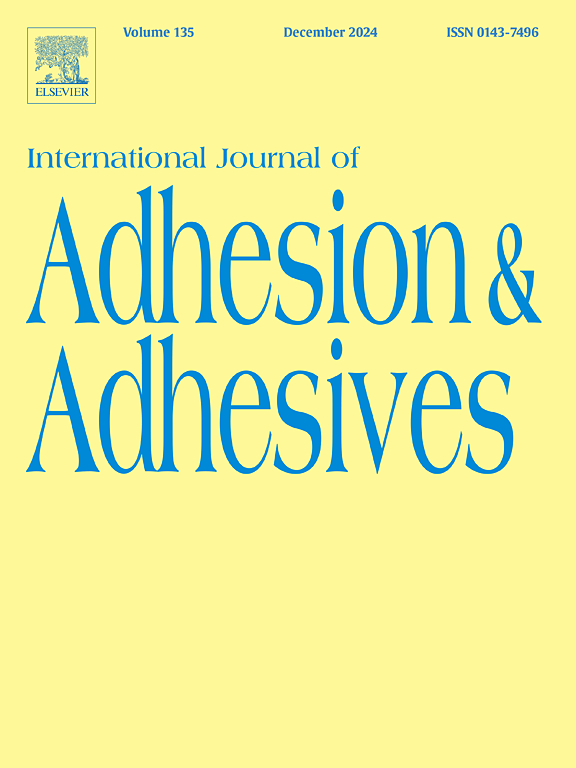Monitoring laser cleaning for enhanced adhesion of FIPG silicone adhesive in automotive industry
IF 3.2
3区 材料科学
Q2 ENGINEERING, CHEMICAL
International Journal of Adhesion and Adhesives
Pub Date : 2025-01-04
DOI:10.1016/j.ijadhadh.2025.103938
引用次数: 0
Abstract
Adhesive bonding and sealing of safety-relevant bonding joints in the automotive industry requires automatable monitoring of cleaning processes to reproducibly ensure clean adherend surfaces and finally sufficient adhesion. The industry lacks combined experimental data that include the cleaning of precisely contaminated surfaces, the monitoring thereof and the subsequent adhesive bonding to design these production processes holistically. Therefore, this study investigates laser-induced fluorescence (LIF) and laser-induced breakdown spectroscopy (LIBS) as inline-capable monitoring methods for laser cleaning of aluminium specimens contaminated with cooling lubricant by varying the contamination grammage and the laser cleaning power density. The results of the methods are validated with measurements using a Fourier transform infrared spectroscopy with an attenuated total reflectance unit (FTIR-ATR). Additionally, the adhesion properties of a model room temperature vulcanised (RTV) silicone adhesive are evaluated using lap shear tests. This adhesive is characteristically used as a formed-in-place gasket (FIPG) for sealing applications.
The results show a complete and consistent picture of the interaction of all applied analytical methods. LIF, LIBS and FTIR-ATR are able to detect contaminations between 0.15 and 2.0 g m−2. Subsequently, they determine a laser power density onset threshold for laser cleaning of a 2.0 g m−2 contaminated specimen, which was verified in lap shear analysis. The fracture patterns show decreasing cohesive failure with increasing contamination grammage, which increases after laser cleaning with a laser power density above the determined threshold.

求助全文
约1分钟内获得全文
求助全文
来源期刊

International Journal of Adhesion and Adhesives
工程技术-材料科学:综合
CiteScore
6.90
自引率
8.80%
发文量
200
审稿时长
8.3 months
期刊介绍:
The International Journal of Adhesion and Adhesives draws together the many aspects of the science and technology of adhesive materials, from fundamental research and development work to industrial applications. Subject areas covered include: interfacial interactions, surface chemistry, methods of testing, accumulation of test data on physical and mechanical properties, environmental effects, new adhesive materials, sealants, design of bonded joints, and manufacturing technology.
 求助内容:
求助内容: 应助结果提醒方式:
应助结果提醒方式:


